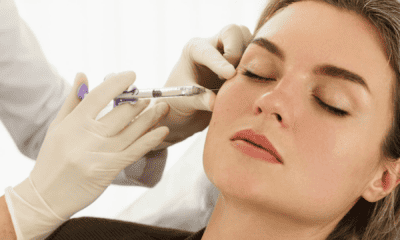Dermal fillers and neurotoxins are fabulous injectables for erasing some of the early signs of aging -notably fine lines and wrinkles. In younger patients, neurotoxins like Botox may even prevent or delay wrinkles from forming. Though both can both deliver natural-looking results, “we’ve all seen people whose facial expressions are not really matching what they are saying,” shares board certified plastic surgeon Dr. Richard Restifo of Orange, CT.
Why does this happen? And are there things that can be done to ensure that it does not happen to you? Dr. Restifo talks with his colleagues board certified plastic surgeons Dr. Sean Doherty of Boston, MA and Dr. Luis Rios of Edinburgh, TX about the best ways to prevent an overdone look.
What Causes an Overdone Look?
Fillers and neurotoxins, namely Botox and Dysport, are the two most common non-surgical procedures among women and men, according to the latest statistics from the American Society for Aesthetic Plastic Surgery (ASAPS). They are so popular because the procedures are easy, effective and versatile. However, we have all had the experience of talking with someone whose facial expressions are out of sink. Something is a little stiff, something is a little off, something is a little weird. “What is going on here,” asks Dr. Restifo. What has the injector done?
Dr. Doherty believes, “most of those scenarios are people who are overdone, most likely with neurotoxins.” Unlike dermal fillers, whose name gives away their purpose, Botox and Dysport work their magic by paralyzing certain aspects of facial muscles. This temporary situation allows for the muscles to work enough to animate the face, but not enough to continue the movement that causes wrinkles. If too much of the substance is applied, then the facial muscles can be inhibited, causing an unwanted, stiff appearance.
This unnatural look can also be the result of too much filler. Cheeks that are too big, for example, do not move in the same way as cheeks that are in proportion with the rest of a person’s face. As with Botox, fillers must be expertly placed at the right amounts to avoid an unnatural look.
What is the Best Way to Avoid the Overdone Look?
“Is it just a question of practicing moderation?” asks Dr. Restifo. Is less more, or is there a method that a plastic surgeon or injector might employ to avoid this type of situation?
“I think it’s a little bit of both” explains Dr. Rios. This is why it is so important for patients to really know who they are going to see for their injectables. Is the doctor, esthetician or injector experienced? What are their credentials? Have you examined his or her before and after photos?
It is critical for patients to do their research. It is a patient’s responsibility to do everything possible to make certain that his or her injector is good. Just because someone can legally administer injectables does not mean that the person has the artistic eye and experience to deliver a safe, beautiful, natural looking result.
Managing Patient Expectations
“Some patient, believe it or not, want to be overfilled,” says Dr. Rios. They like the look. It is vital, then, that a plastic surgeon really listen to the patient and find out what he or she wants. A successful outcome with any aesthetic procedure, including injectables, is all about managing a patient’s expectations. With filler and neurotoxins, it helps that the patient is awake. A good surgeon will check in with the patient during the injectables procedure to make certain that he or she likes the results. Although it does take a couple of weeks for a neurotoxin to take full effect, you can see the benefits of a filler right away.
“When you inject with a neurotoxin, do you have the patient sit up or make facial expressions? How do you approach it?” asks Dr Restifo. When meeting a patient for the first time, answers Dr. Doherty, he will have them look in the mirror and move their face around — up, down and side to side. He will talk with them about what he expects to have happen with neurotoxins and what he does not want to have happen. Then, he will do the injections with the patient in a seated position so he can feel their muscles in order to determine the best place to inject.
How to Know When Enough is Enough?
It really comes down to knowing when enough is enough. A lot of this has to do with experience, which is why it is important to see a plastic surgeon or injector who has performed this procedure a lot. For Dr. Rios, it is also about going slow. He takes his time with injectables, pausing during the procedure to check in with the patient, examine what he has done and then decide if the patient needs more of something or not.
“I think fillers can really be a good thing for plastic surgeons to have in our armamentarium,” says Dr. Doherty. Part of the reason for this is that it is an incredibly versatile procedure. In younger patients, injectables are a nice way to address and possibly prevent the earliest signs of aging. In older patients, fillers and neurotoxins are a fabulous adjunct to other surgical and non-surgical anti-aging procedures, like FaceTite, a facelift or liposuction.
A natural-looking result is always attainable assuming that you see the right injector and that your expectations are realistic. Injectables can minimize the signs of aging, but if you try to erase them completely, that’s when things can look strange. Like most in life, it’s a balancing act.




















Facebook
Twitter
Instagram
YouTube
RSS